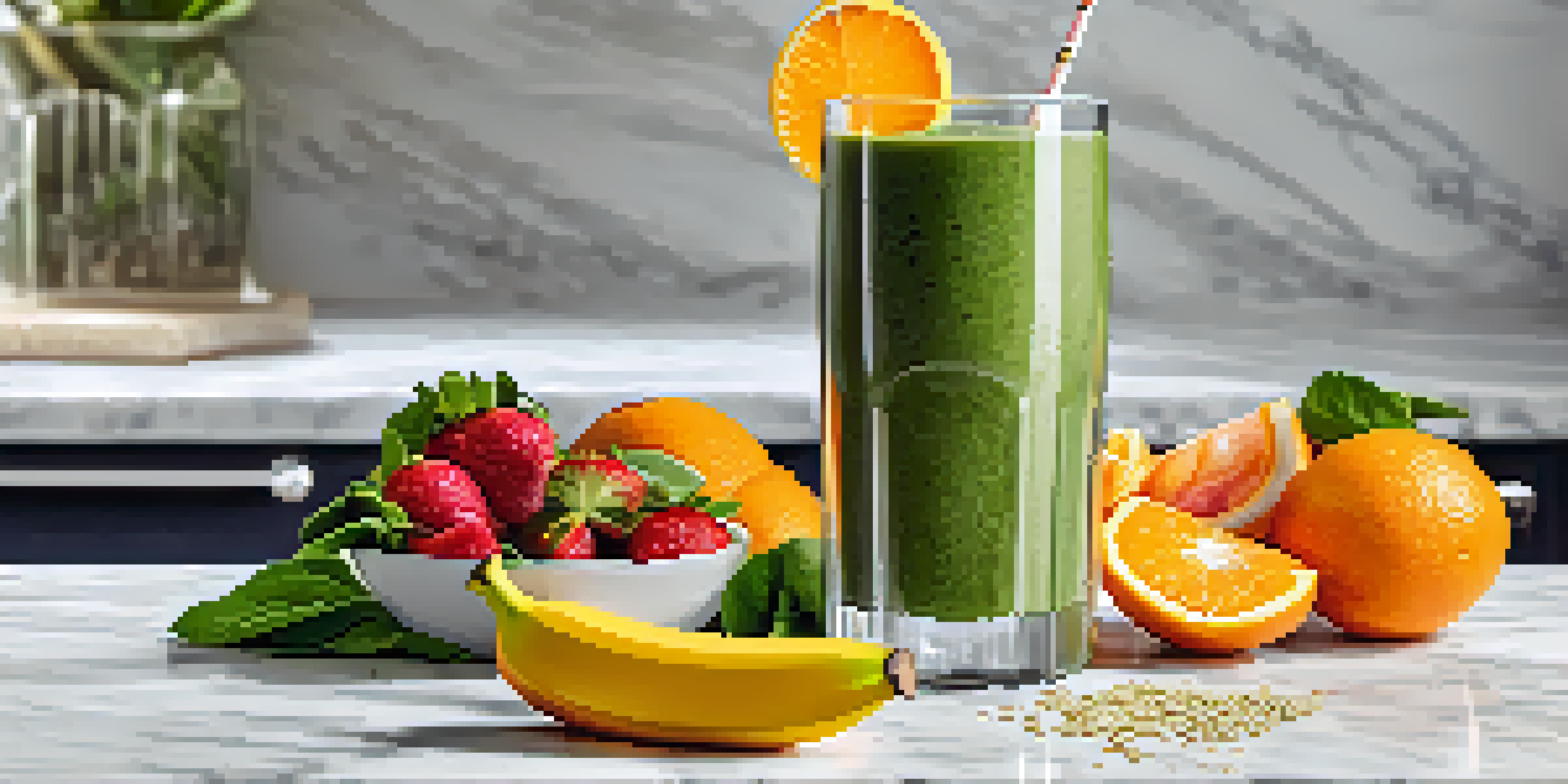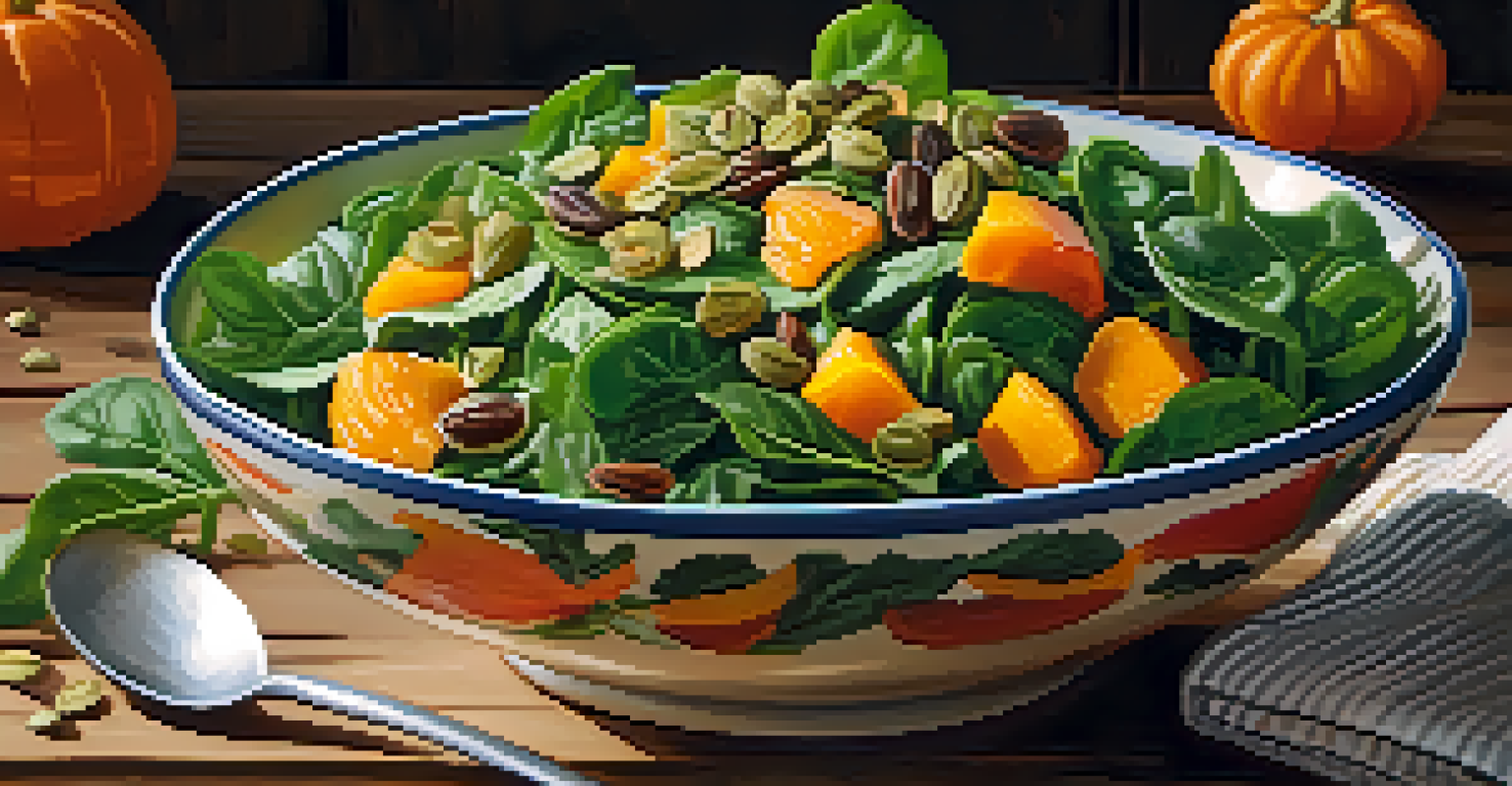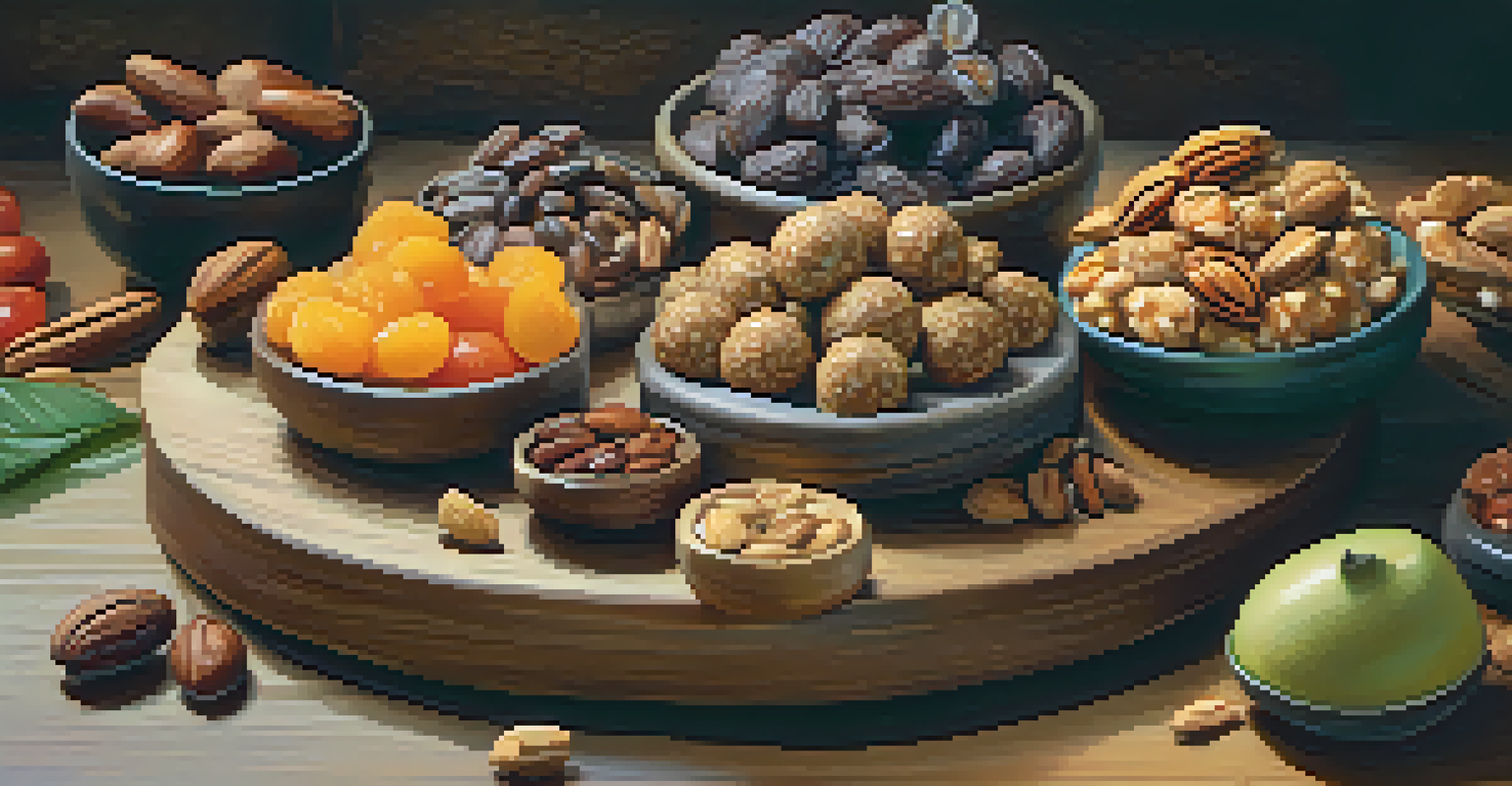How to Incorporate Iron-Rich Foods into Raw Diets

Understanding the Importance of Iron in a Raw Diet
Iron is a crucial mineral that plays a vital role in producing hemoglobin, which helps carry oxygen in your blood. For those following a raw diet, ensuring adequate iron intake is essential to maintain energy levels and overall health. Without sufficient iron, you might experience fatigue, weakness, or even more serious health issues.
Iron is the most important mineral for the human body, and it is essential for the functioning of various proteins and enzymes.
There are two types of dietary iron: heme iron found in animal products and non-heme iron found in plant sources. While raw diets typically limit or exclude animal products, you can still meet your iron needs by focusing on non-heme sources. Understanding these differences will help you choose the right foods to incorporate into your meals.
To maximize your iron absorption from plant-based sources, it’s beneficial to pair them with vitamin C-rich foods. This combination enhances your body’s ability to absorb non-heme iron, making your meals not only healthier but also more enjoyable.
Top Raw Foods Rich in Non-Heme Iron
When it comes to iron-rich foods in a raw diet, you have several delicious options. Leafy greens such as spinach, kale, and swiss chard are excellent sources of non-heme iron. Other great choices include legumes like lentils and chickpeas, which can be sprouted to increase their nutritional value.

In addition to greens and legumes, nuts and seeds are also packed with iron. Pumpkin seeds, hemp seeds, and cashews not only provide iron but also add a satisfying crunch to your meals. Incorporating these foods into your salads, smoothies, or snacks can easily boost your iron intake.
Iron is Crucial for Raw Dieters
Ensuring adequate iron intake is essential for maintaining energy levels and overall health on a raw diet.
Lastly, don’t forget about dried fruits like apricots and raisins, which can be a sweet addition to your diet. They can be eaten as snacks, added to energy bars, or mixed into salads to enhance both flavor and nutritional value.
Creative Ways to Include Iron-Rich Foods in Meals
One of the easiest ways to include iron-rich foods is by making vibrant salads. Combine a variety of leafy greens with nuts, seeds, and dried fruits for a deliciously nutritious meal. Drizzle with a citrus dressing to enhance iron absorption, and you’ve got a powerhouse dish.
You are what you eat, and what you eat can affect your mood and energy levels.
Smoothies are another fantastic option. Blend together spinach, banana, and a scoop of hemp seeds for a nutrient-dense drink. You can even add a splash of orange juice for extra vitamin C, making your smoothie both tasty and beneficial for iron absorption.
Don’t underestimate the power of raw snacks! Create energy balls using dates, nuts, and seeds, providing a quick and satisfying boost throughout your day. These snacks are perfect for on-the-go lifestyles while ensuring you’re getting your iron fix.
Pairing Iron-Rich Foods with Vitamin C Sources
As mentioned earlier, pairing iron-rich foods with vitamin C can significantly enhance iron absorption. Foods like bell peppers, strawberries, and citrus fruits are fantastic sources of vitamin C. By adding these to your meals, you can turn an ordinary dish into a nutritional powerhouse.
For instance, consider tossing some sliced bell peppers into your salads or adding a handful of strawberries to your morning smoothie. This simple addition not only boosts the flavor but also elevates the iron content in your diet.
Pair Iron with Vitamin C
Combining non-heme iron sources with vitamin C-rich foods enhances iron absorption significantly.
Additionally, you can create delicious fruit salads that combine various vitamin C-rich fruits. This not only makes for a refreshing snack but also ensures that your body absorbs iron more effectively from the other foods you consume.
Mindful Eating and Iron Absorption
Mindful eating is essential when focusing on iron absorption in your raw diet. Paying attention to what and how you eat can make a significant difference in your overall health. Taking the time to chew your food thoroughly and savor each bite can aid digestion and absorption.
Moreover, be aware of inhibitors that may affect iron absorption. Foods like coffee and tea, which contain tannins, can hinder iron uptake when consumed with meals. Consider separating your consumption of these beverages from your iron-rich meals to maximize absorption.
Lastly, staying hydrated is key. Drinking enough water supports digestion and overall nutrient absorption, including iron. Keeping a water bottle handy throughout the day can help you maintain optimal hydration levels.
Monitoring Your Iron Levels on a Raw Diet
If you're concerned about your iron intake while following a raw diet, monitoring your levels can provide peace of mind. Regular check-ups with your healthcare provider can help you assess your iron status and determine if any adjustments are needed in your diet. Blood tests can give you a clear picture of your iron levels.
It's also beneficial to be aware of the symptoms of iron deficiency, such as fatigue, pale skin, or shortness of breath. If you notice these symptoms, it's essential to consult a healthcare professional for guidance on how to address them through your diet.
Monitor Your Iron Levels Regularly
Regular check-ups and food tracking can help you maintain optimal iron levels and address any deficiencies.
In addition to monitoring through medical means, keeping a food diary can help you track your iron intake. Jotting down what you eat allows you to identify patterns and ensure you're consistently incorporating iron-rich foods into your meals.
Conclusion: A Balanced Approach to Iron in Raw Diets
Incorporating iron-rich foods into a raw diet doesn’t have to be complicated. With a little knowledge and creativity, you can easily boost your iron intake while enjoying delicious meals. Remember to focus on a variety of sources, from leafy greens to nuts and seeds, and don’t forget the power of vitamin C.
As you experiment with different recipes and combinations, you'll discover that eating for nutrition can be both satisfying and enjoyable. Whether it's a vibrant salad or a refreshing smoothie, the possibilities are endless.

Finally, staying mindful of your iron levels and making necessary adjustments will help you maintain your health and energy. With these tips in hand, you're well on your way to a balanced raw diet that supports your iron needs.